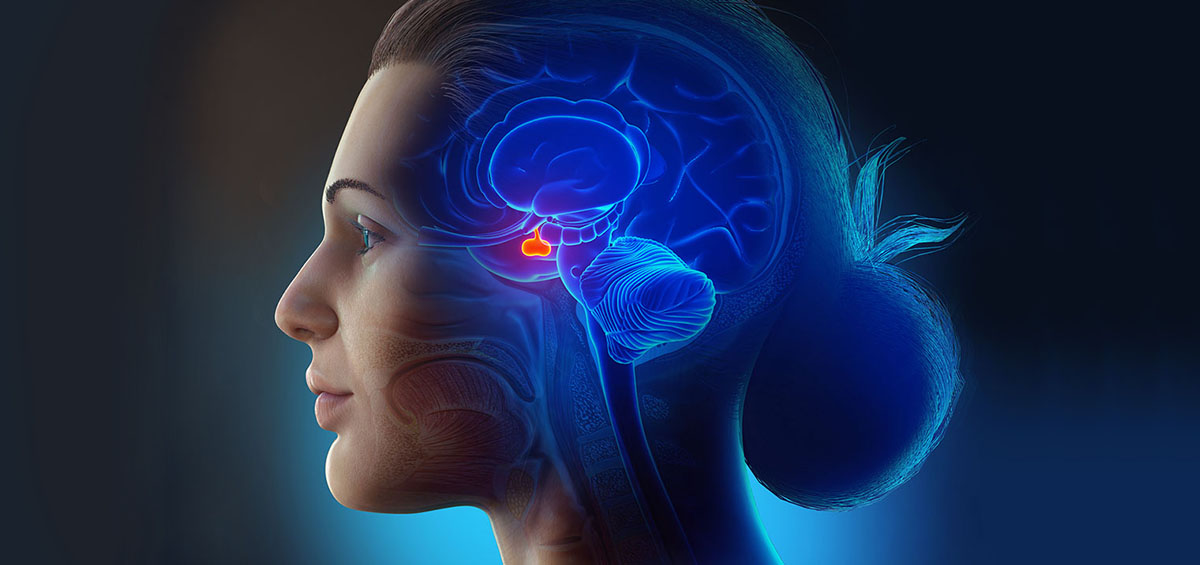

Overview of Pituitary Hormone Disorders:
Disorders of the pituitary gland result from the gland's excessive or insufficient production of a particular hormone. Such imbalances are brought about by tumors, genetics, infections, head injuries, or autoimmune disorders. Depending on the type of disorder, the symptoms may be quite varied, involving various organs and body systems.
Common Pituitary Hormone Disorders
1. Acromegaly and Growth Hormone Deficiency
Acromegaly results from excessive growth hormone (GH) production, typically due to a benign pituitary tumor. It leads to abnormal bone and tissue growth, resulting in enlarged hands, feet, and facial features. Conversely, growth hormone deficiency (GHD) can cause stunted growth in children and fatigue, muscle loss, and poor bone density in adults.
2. Cushing’s Disease
Cushing's disease is caused by overproduction of adrenocorticotropic hormone (ACTH), resulting in an excess of cortisol. It causes weight gain, hypertension, weakness of muscles, and susceptibility to infections. It is usually associated with pituitary tumors.
3. Hyperprolactinemia
A surplus of prolactin hormone results in hyperprolactinemia, which in turn can bring about irregular periods, infertility, and lactation in non-lactating persons. In men, it could lead to erectile dysfunction and lowered libido.
4. Hypopituitarism
Hypopituitarism results when the pituitary gland is unable to secrete sufficient amounts of one or more of the hormones. Hypopituitarism may result in thyroid-stimulating hormone (TSH), ACTH, GH, and sex hormone deficiencies, leading to tiredness, weight gain or loss, decreased stress tolerance, and infertility.
5. Diabetes Insipidus
This condition occurs as a result of poor secretion of antidiuretic hormone (ADH), causing excessive thirst and urination. It does not influence blood sugar levels like diabetes mellitus but can lead to severe dehydration if not treated.
Diagnosis of Pituitary Disorders
Pituitary hormone disorders can be diagnosed through a thorough approach, which involves:
Blood Tests – To check the levels of hormones and identify imbalances.
MRI or CT Scans – To detect tumors or abnormalities in the pituitary gland.
Stimulation or Suppression Tests – To test hormone function under controlled circumstances.
Vision Tests – Because pituitary tumors have the potential to compress the optic nerves, which impair vision.
Early detection is important to avoid complications and provide timely intervention.
Treatment Methods for Pituitary Conditions
Medications
Most pituitary conditions can be treated with hormone replacement therapies or drugs that modulate hormone production. For instance, dopamine agonists such as cabergoline treat hyperprolactinemia, while corticosteroids treat ACTH deficiency.
Surgical Intervention
Transsphenoidal surgery is the most prevalent operation to eliminate pituitary tumors, especially for acromegaly, Cushing's disease, or visual and general health tumors.
Radiation Therapy
Radiation therapy can be suggested if surgery is not possible or if a tumor persists following surgery. It is used to decrease hormone production in the case of over-secretion.
Lifestyle and Long-Term Management
For patients with chronic pituitary disorders, lifestyle changes like proper diet, exercise, stress management, and regular medical follow-up are the keys to sustaining hormonal balance and avoiding complications.
Conclusion
Disorders of pituitary hormones have the potential to affect general health and quality of life in a significant way. Yet, with improved diagnostic methods and treatment, such conditions are frequently controlled effectively. Routine medical examination and early treatment are instrumental in providing maximum endocrine well-being. Timely medical attention and knowledge are the keys to preventing the risks of pituitary dysfunction and enhancing long-term well-being.


